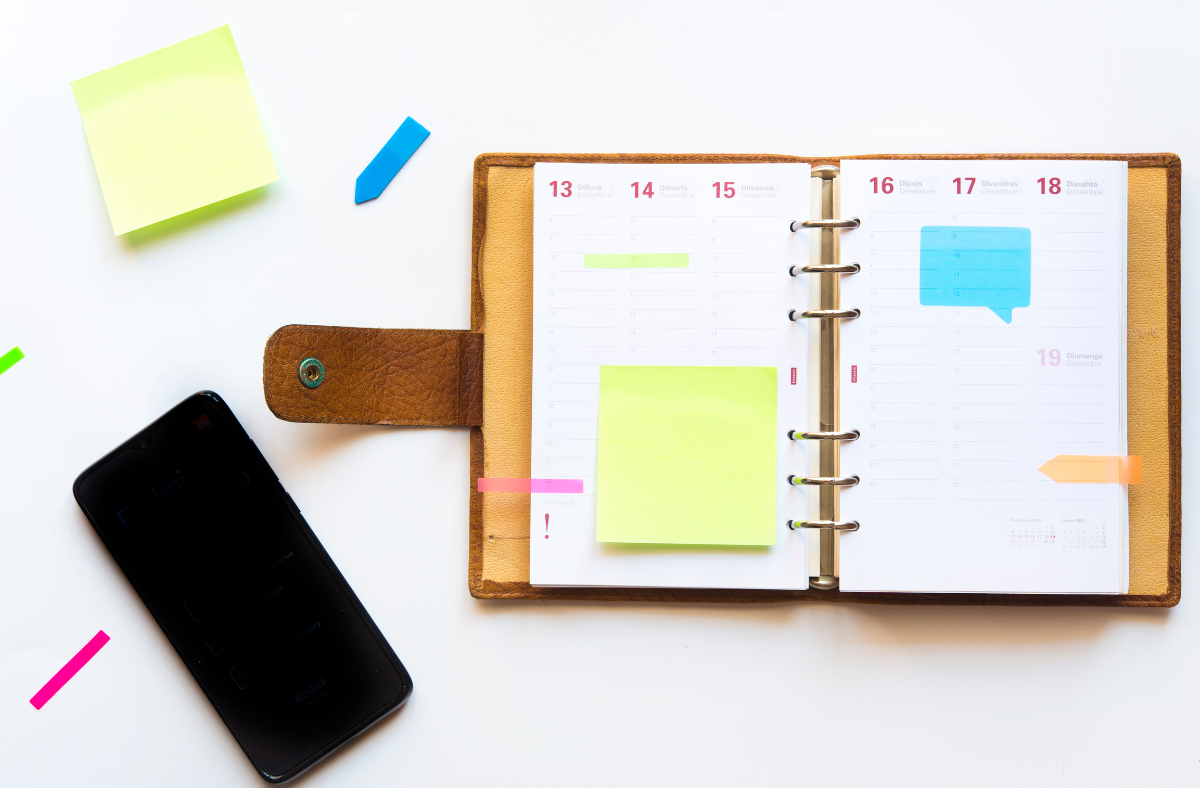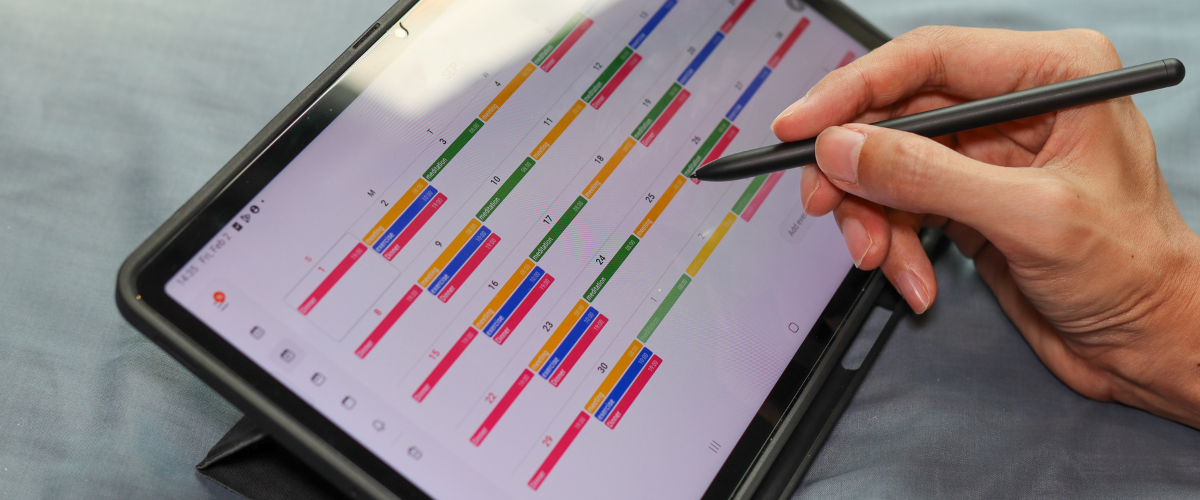If you have autism, an organized life is probably extra-important to you. This article is dedicated to April as Autism Month, and to everyone who works with autism-friendly technology.

Some Organization Tools
Do you have more appointments, duties, and goals than can fit in your brain? There are plenty of apps and other tools for getting organized—but first you have to choose a tool, which can be as overwhelming as any major task.
Here’s a look at some popular options:
- Notes comes with every iOS device and can be used as a basic digital notepad. It can also help users create checklists, scanned images, voice recordings, and even hand sketches. Plus, says Amy Fuchs, our BridgingApps Program Manager: “For people with stumbling speech or verbal fatigue, the Notes app can help you organize your thoughts before speaking them.”
- Google Keep is the Android counterpart to Notes. (It’s also downloadable to iOS.) With a default display that shows all notes on one screen, this is a good option for people who like the big-picture view.
- Todoist is popular with users who juggle multiple projects. There are sections for to-do lists, upcoming events, and project folders.
- Rocketbook is designed for maximum efficiency with cloud services. A favorite feature is Handwriting Recognition, which recognizes digital cursive as a file-search option.
- Calendar and Google Calendar are from iOS and Android, respectively. Both feature automatic reminders and options for sharing access with other Calendar users. Google Calendar also offers a direct link to Google Meet videoconferencing.
- Choiceworks Calendar, which uses a picture-based system, is recommended for children and visual thinkers.
- Old-fashioned pen and paper shouldn’t be discounted: many people remember things better after writing them down in hard copy. And if you have a lot of notes, you can spread them out for a big-picture view that wouldn’t fit on even the largest screen.

Sample Organizing Approach
Amy Barry, our Digital Marketing Lead, uses apps along with real-world paper.
Q: How do you use the Notes app?
Amy: Primarily for personal lists. I keep ongoing checklists for stores I frequent; and my main grocery list is a Note, digitally shared with family members so they can edit it. I also track my yearly medical appointments in the app. Additionally, I keep lists of fun things to do in my community; lists of restaurants I’d like to try; a travel bucket list; and travel packing lists.
Q: Do you have other favorite apps for organizing?
Amy: My family uses a shared Google Calendar for events everyone needs to be aware of. It’s displayed on a smart screen in our kitchen, and it automatically syncs across devices.
We have three daughters and two sons living in different parts of the country, so we also use the Google Calendar to stay connected. Plus shared Notes and group texts—and the Wanderlog app for trip planning.
Q: How do you use pen-and-paper notes?
Amy: I use a daily planner to write down must-do tasks for each weekday. Having the list visually in front of me is a clear reminder of what needs to be done; and physically crossing things off gives me a sense of accomplishment.
Q: What advice do you have for others seeking organizing systems?
Amy: Trial and error. Every person and family is unique, and “what works best” varies. You may have to try many options to find what suits your needs.
Other Tips for Finding Your Best Organizing System
- Search by personality and preferences. There are systems for autistic people, people with ADHD, people with IDD, people with extra-flexible schedules, people emphasizing long-term goals, and much more.
- Feel free to use a combination of options—or to design your own system.
- Block off specific time slots for each task, and treat each as a firm commitment: no “urgent”-but-trivial replacements allowed.
- However, don’t cram your calendar full and treat it as a commandment set in stone. There will be changes and modifications, so reserve “set-in-stone” status for top-top priorities, and leave space between them.
- Stick with any new system for at least four weeks. New habits take time to get comfortable with, so don’t confuse “adjustment period” stress with “doesn’t work” stress.
- If a system really isn’t working—or working the way it used to—try to pinpoint the cause. Have your responsibilities changed? Are there new stress sources in your life? Do you have new goals or interests to make time for? Whatever the core problem, it’s usually best to keep the current system and modify it accordingly.
- Celebrate every small step forward. Aim for progress, not perfection.

